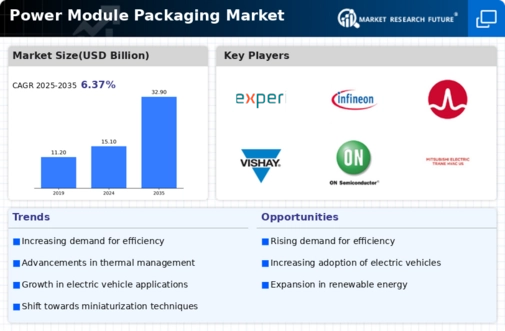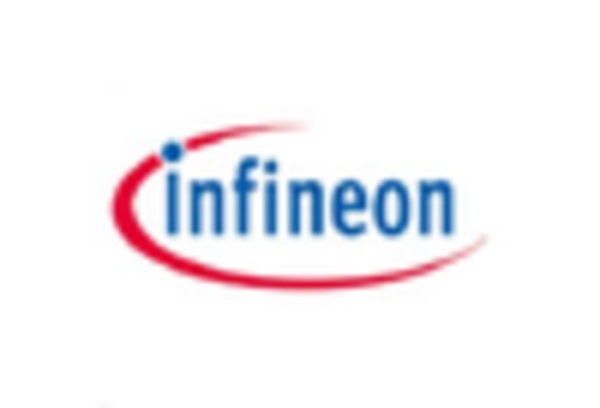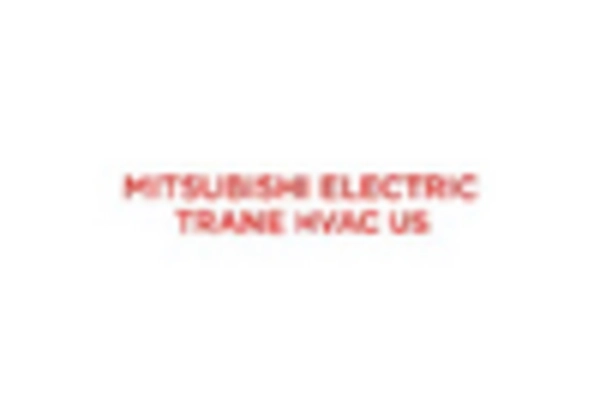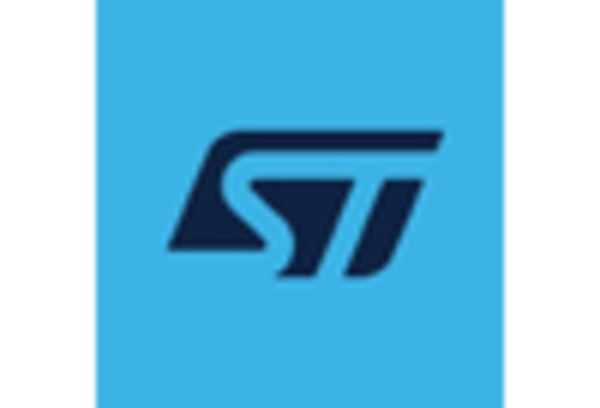Growth in Renewable Energy Sector
The expansion of the renewable energy sector serves as a crucial driver for the Power Module Packaging Market. With a growing emphasis on sustainable energy sources, such as solar and wind, the demand for efficient power conversion systems is on the rise. In 2025, the renewable energy market is expected to witness substantial growth, with investments projected to reach trillions of dollars. This trend necessitates advanced power module packaging solutions that can withstand harsh environmental conditions while ensuring optimal performance. As renewable energy systems become more prevalent, the need for reliable and efficient power modules becomes increasingly critical. The Power Module Packaging Market must adapt to these demands, focusing on innovations that enhance the durability and efficiency of power modules in renewable applications.
Rising Demand for Electric Vehicles
The increasing adoption of electric vehicles (EVs) is a primary driver for the Power Module Packaging Market. As governments and consumers prioritize sustainable transportation, the demand for efficient power modules in EVs escalates. In 2025, the EV market is projected to grow significantly, with estimates suggesting a compound annual growth rate (CAGR) of over 20 percent. This surge necessitates advanced power module packaging solutions that enhance performance and thermal management. Consequently, manufacturers are compelled to innovate and optimize their packaging technologies to meet the evolving requirements of the automotive sector. The integration of power modules in EVs not only improves energy efficiency but also contributes to the overall performance of electric drivetrains, thereby reinforcing the importance of the Power Module Packaging Market.
Increasing Focus on Energy Efficiency
The growing emphasis on energy efficiency across industries is a significant driver for the Power Module Packaging Market. As organizations strive to reduce energy consumption and operational costs, the demand for high-performance power modules rises. In 2025, energy efficiency regulations are expected to become more stringent, compelling manufacturers to adopt advanced packaging solutions that minimize energy losses. This trend is particularly evident in sectors such as data centers and industrial applications, where energy costs represent a substantial portion of operational expenses. The Power Module Packaging Market must respond to these challenges by developing innovative packaging designs that enhance energy efficiency and performance. This focus on sustainability not only benefits the environment but also drives economic advantages for businesses.
Expansion of Consumer Electronics Market
The expansion of the consumer electronics market is a vital driver for the Power Module Packaging Market. As technology continues to advance, the demand for compact and efficient power solutions in devices such as smartphones, laptops, and wearables is increasing. In 2025, the consumer electronics market is projected to grow, with estimates indicating a rise in unit sales across various product categories. This growth necessitates the development of power modules that can deliver high performance in smaller form factors. Manufacturers in the Power Module Packaging Market are thus challenged to innovate and create packaging solutions that meet the demands of modern consumer electronics. The integration of advanced power modules not only enhances device performance but also contributes to the overall user experience.
Technological Advancements in Power Electronics
Technological advancements in power electronics are significantly influencing the Power Module Packaging Market. Innovations in semiconductor materials, such as silicon carbide (SiC) and gallium nitride (GaN), are enabling the development of more efficient and compact power modules. These materials offer superior thermal performance and higher switching frequencies, which are essential for modern applications. In 2025, the market for power electronics is anticipated to grow, driven by the increasing need for energy-efficient solutions across various sectors, including industrial automation and consumer electronics. As these technologies evolve, the Power Module Packaging Market must keep pace by integrating new materials and designs that enhance performance and reliability. This ongoing evolution presents opportunities for manufacturers to differentiate their offerings and capture market share.















Leave a Comment